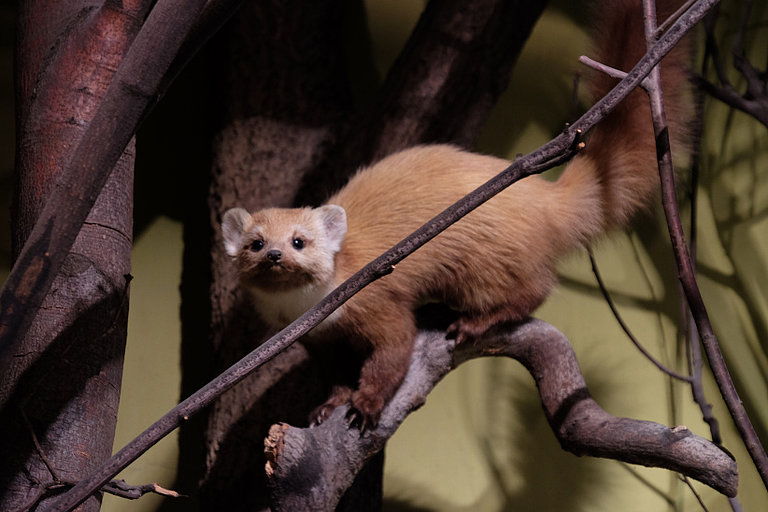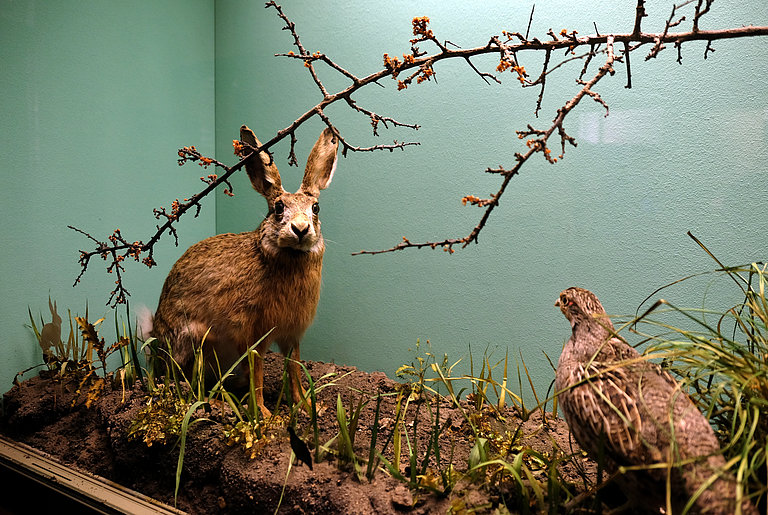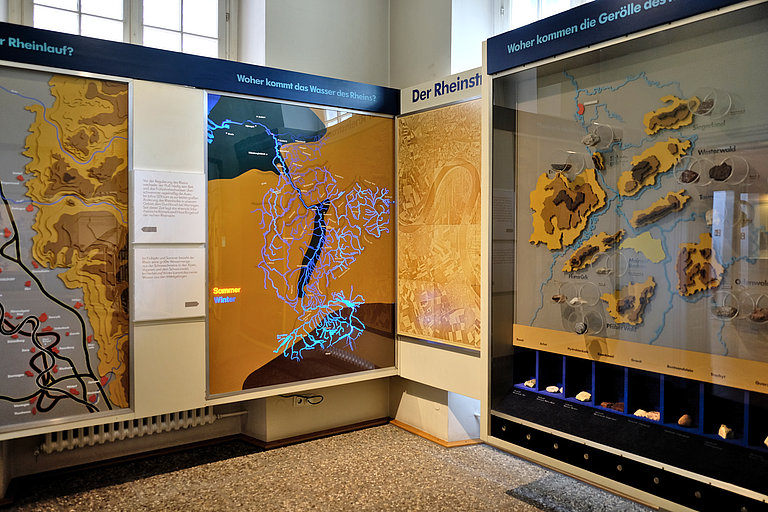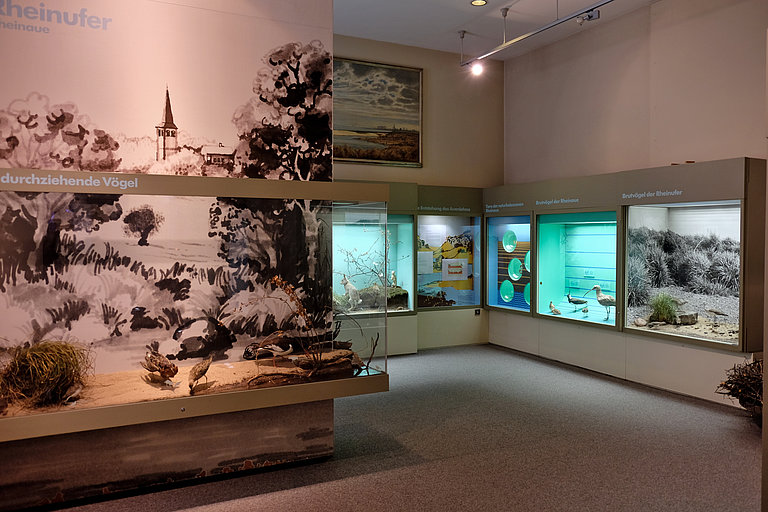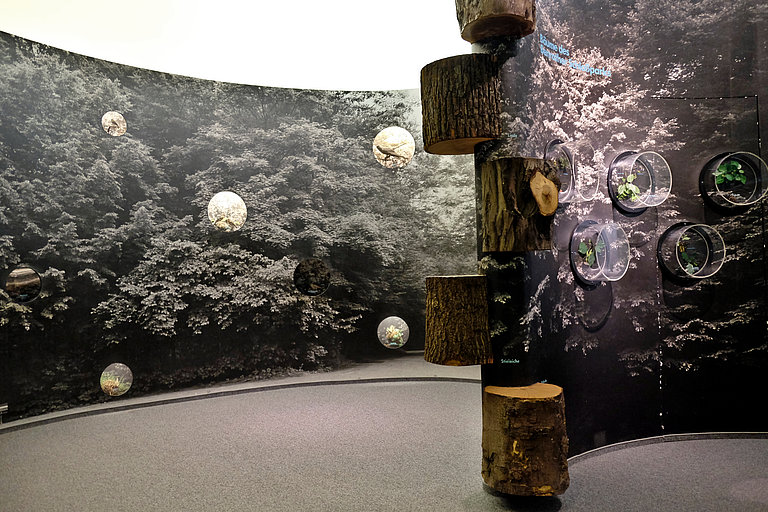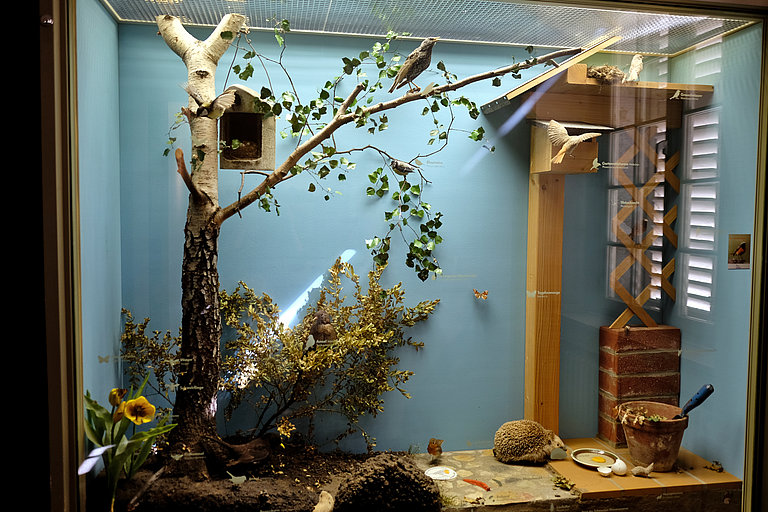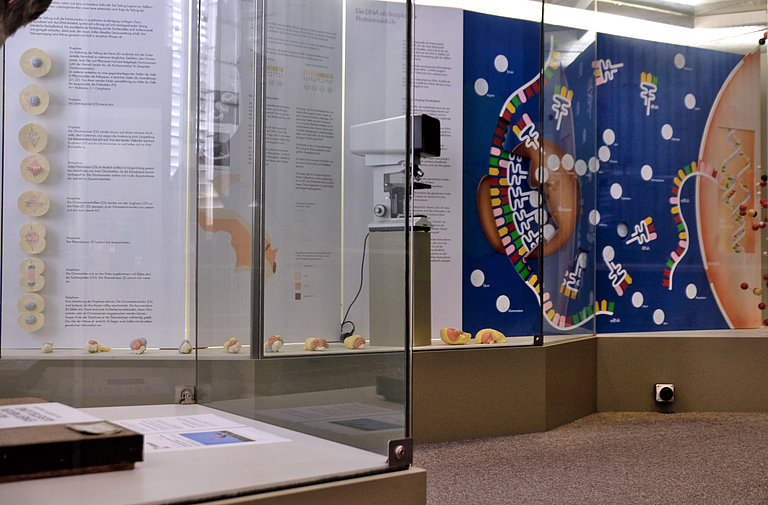Museum of Natural History
Opening hours
-
Monday
11 am - 5 pm
-
Tuesday
11 am - 5 pm
-
Wednesday
closed
-
Thursday
closed
-
Friday
2 pm - 5 pm
-
Saturday
11 am - 6 pm
-
Sunday
11 am - 6 pm

A FASCINATING GLIMPSE
at our regional flora and fauna
The Museum of Natural History is located in the East Wing of Benrath Palace. It was founded by Dr Heinrich Opladen, a teacher working at the Palace Grammar School then integrated in the East Wing, as a museum of local natural history in 1929. Its main focus is on the nature and the biotopes of the Düsseldorf area, such as the pastures along the Rhine, the Neandertal and Ohligser Heide. The museum last underwent restructuring in the 1970s.
Large parts of the exhibition have not changed. A variety of showcases still offer a fascinating look at habitats that are common for the area. These showcases displaying snippets of nature in great detail are called dioramas. They offer visitors an educational look at the nature of the Düsseldorf area and reveal details they would most likely miss.
Parts of Dr Peter Frey’s bird exhibition are also on display at the museum. Single-handedly, the Leverkusen-based dentist collected more than 1,074 taxidermied birds. They were installed in 450 showcases with naturalistic background scenery paintings: mini or singular dioramas. He created scenes of lasting value. Among the technical equipment of the museum, there is a one-of-a-kind bird clock imitating the birds singing at the Palace Park in the course of a day.
The upper floor of the Museum of Natural History holds the permanent exhibition “Man’s View on Animals. Josef Pallenberg’s Animal Sculptures”. It is open every Saturday and Sunday. The exhibition displays animal sculptures created by the internationally renowned animal sculptor Josef Pallenberg (1882-1946). In a unique fashion, they address the charged relationship between the artistic and the zoological intention, as well as the boundaries between nature and art. They also reveal a unique relationship between man and animal. Six rooms comprising a floor space of 200 square metres portray the historic, scientific, political and aesthetic relations of Pallenberg’s animal sculptures at the beginning of the 20th century. Based on the historic context, the visitor is invited to reflect on his personal relationship towards animals. What does living with animals imply and, on this basis, what does working as an animal sculptor imply? Are we allowed to lock away, put on display, hurt and even kill animals for scientific, economic or artistic purposes? For the first time, excerpts from Pallenberg’s sketch books, which belong to the collection of Aquazoo – Löbbecke-Museum, and photographs depicting the artist’s extraordinary relationship with wildlife animals are on display.
Our Current Special Exhibition at the Museum of Natural History
NEOZOA: ANIMAL NEWCOMERS & NATIVE EXOTICS
since March 2023
The exhibition at the Natural History Museum highlights the phenomenon of new citizens, so-called neozoa, which have left their original ranges due to human activity. In addition, the exhibition presents animals that immigrate independently, often favored by climate change, or were once extinct but have returned. Tracing the new citizens, climate migrants and returnees, the exhibition takes a look at the establishment of new - sometimes exotic - animal species in Germany.
For more information, click here.
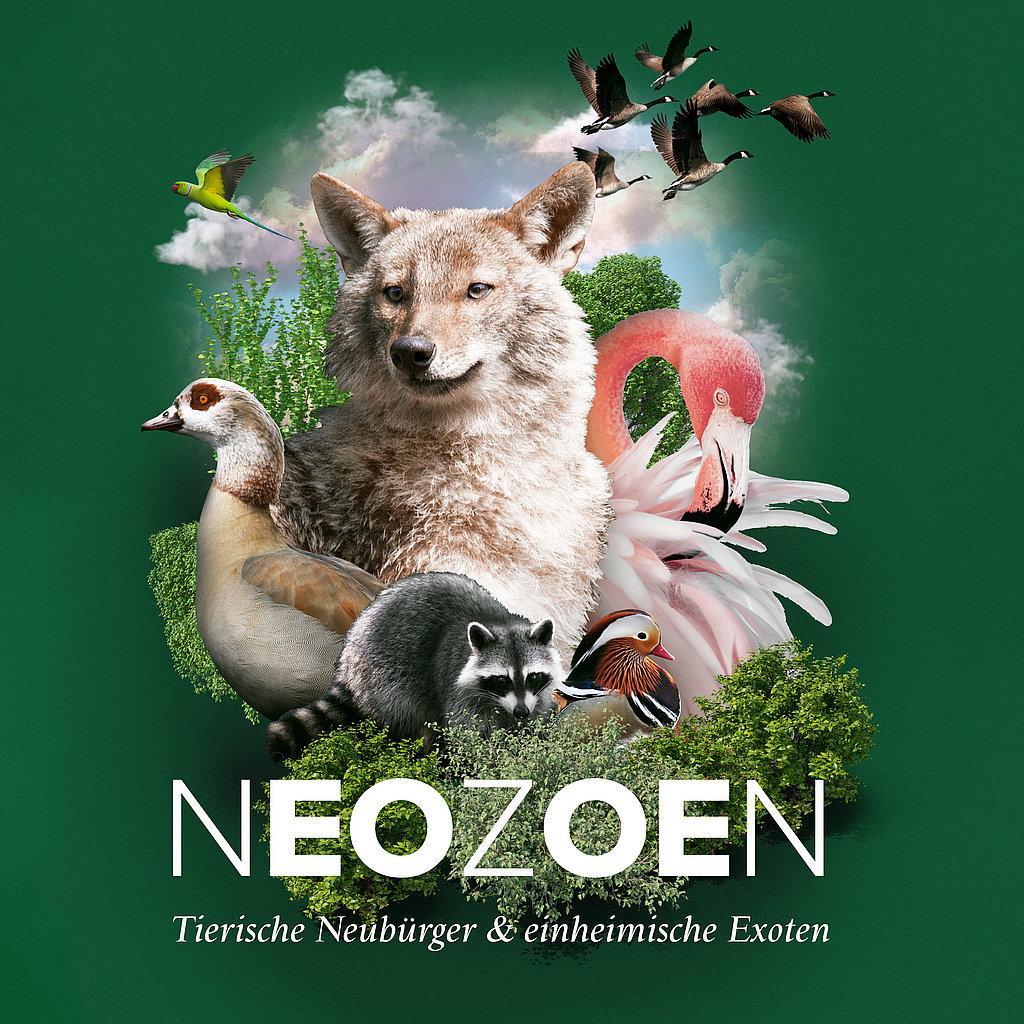
The Peter-Frey-Collection
Peter Frey’s (1872-1954) top-class exhibition is one of the main emphases of the Museum of Natural History. It contains 1,074 stuffed birds presented in detailed dioramas, as well as 17 mammals. With regard to the changes of biodiversity and the population of native species of birds, these are important references.
The ornithologist and passionate huntsman Dr Peter Frey actually worked as a dentist for a living and collected his exhibits according to systematic aspects. His aim was a preferably complete collection with one specimen per species.
He derived his animals (which were skinned in one piece) from all over Europe, even from zoos.
His rewards and scientific studies from the first half of the 20th century are still important pieces of reference concerning the changes of biodiversity and the population of native species of birds. The collection was assembled roughly between 1890 and 1954 and gives us an overall picture of the way animals were stuffed and collections were put together.
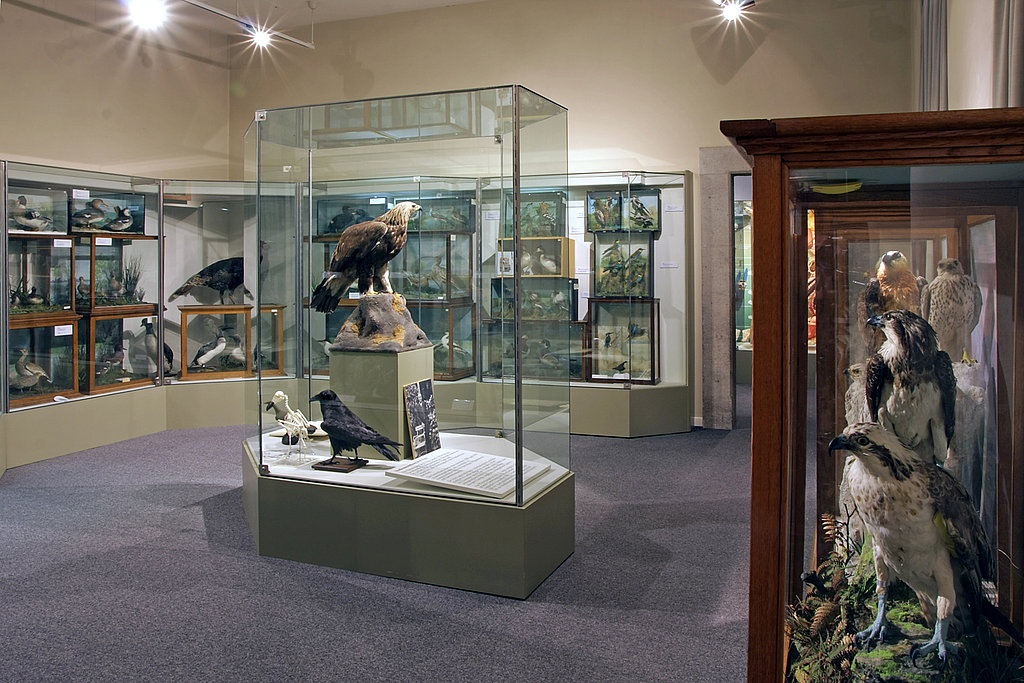
The Pallenberg-Collection
This collection of about 575 sculptures (plaster, clay, stone cast and bronze) was gradually acquired by Benrath Palace and Park Foundation and the City of Düsseldorf in 2006/2007. About 1,300 hand drawings and sketches as well as 1,450 objects including stuffed animals, skeletons, natural casts and an extensive collection of personal items are stored at Aquazoo – Löbbecke-Museum.
Born in Cologne, Pallenberg went to Cologne Zoo frequently and started to capture his observations in sketches and to implement them plastically when he was still a pupil.
His later professors and teachers included Peter Theodor Janssen, Friedrich Roeber and Willy Spatz at the Academy of Fine Arts in Düsseldorf. In his workshop in the vicinity of Cologne Zoo, he created his first important pieces of art around 1900. For research purposes, he also kept a tame wolf called Prinz and a lioness called Guste there.
Pallenberg first garnered recognition, when his sculpture Boar Hunt was exhibited at Industrie- und Gewerbeausstellung at Düsseldorf Kunstpalast in 1902. At Große Berliner Kunstausstellung in 1904, Pallenberg was represented with 16 animal sculptures. In 1907, Pallenberg was awarded the Golden Medal of the State for Rominten Deer at Deutschnationale Kunstausstellung. The original animal sculpture is still on display at Zoologischer Garten Berlin, while a recast is presented at Düsseldorfer Hofgarten.
Thanks to his recognition as an animal sculptor, Carl Hagenbeck commissioned Pallenberg to create the main entrance of Tierpark Hagenbeck. To this day, this landmark can still be visited and is one of the park’s major attractions. In the years to follow, he also designed about 50 dinosaur reconstructions on a scale of one to one which up to this day and despite the advance of technology rank amongst the most naturalistic depictions of those animals.
After moving to a workshop in Düsseldorf-Lohausen, Pallenberg was finally able to free himself of any convention and restriction dictated by residents. Due to him conducting anatomical analyses, he always kept life animals and was not exactly a welcome neighbour. Despite his lions and other predators being tame, they were still feared. But it was this coexistence in combination with his observation skills supported by technical media such as photography and films that rendered Pallenberg able to depict animals in their natural motion process and to immortalize them with various materials.
His naturalistic pieces of work made Pallenberg also famous abroad. Apart from zoos, among his commissioners there were museums and zoological institutes in e.g. Detroit, La Plata and Cincinnati. Pallenberg also modelled porcelain figurines for WMF and Karl Ens.
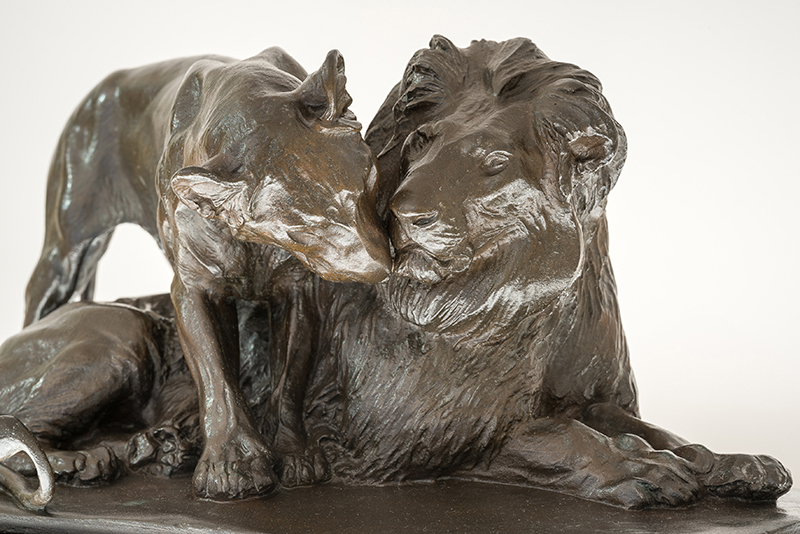
Our house rules
- Bags, umbrellas and other luggage please stay in the checkroom.
- Bringing drinks and food in the historical rooms is not allowed.
- Please do not touch anything.
- Please take photos for private purpose only and without flash.

